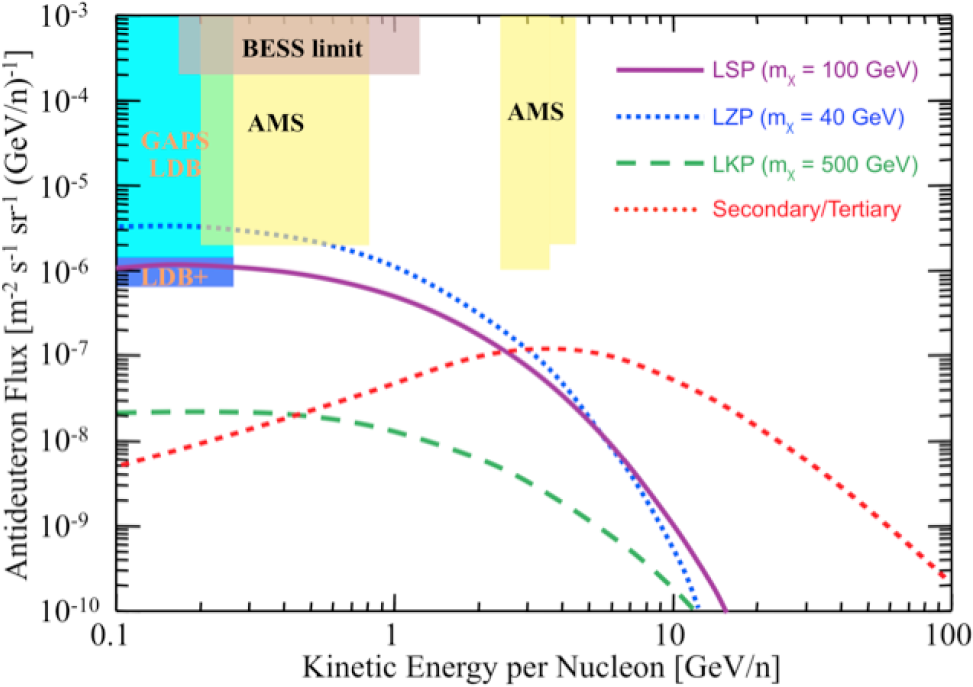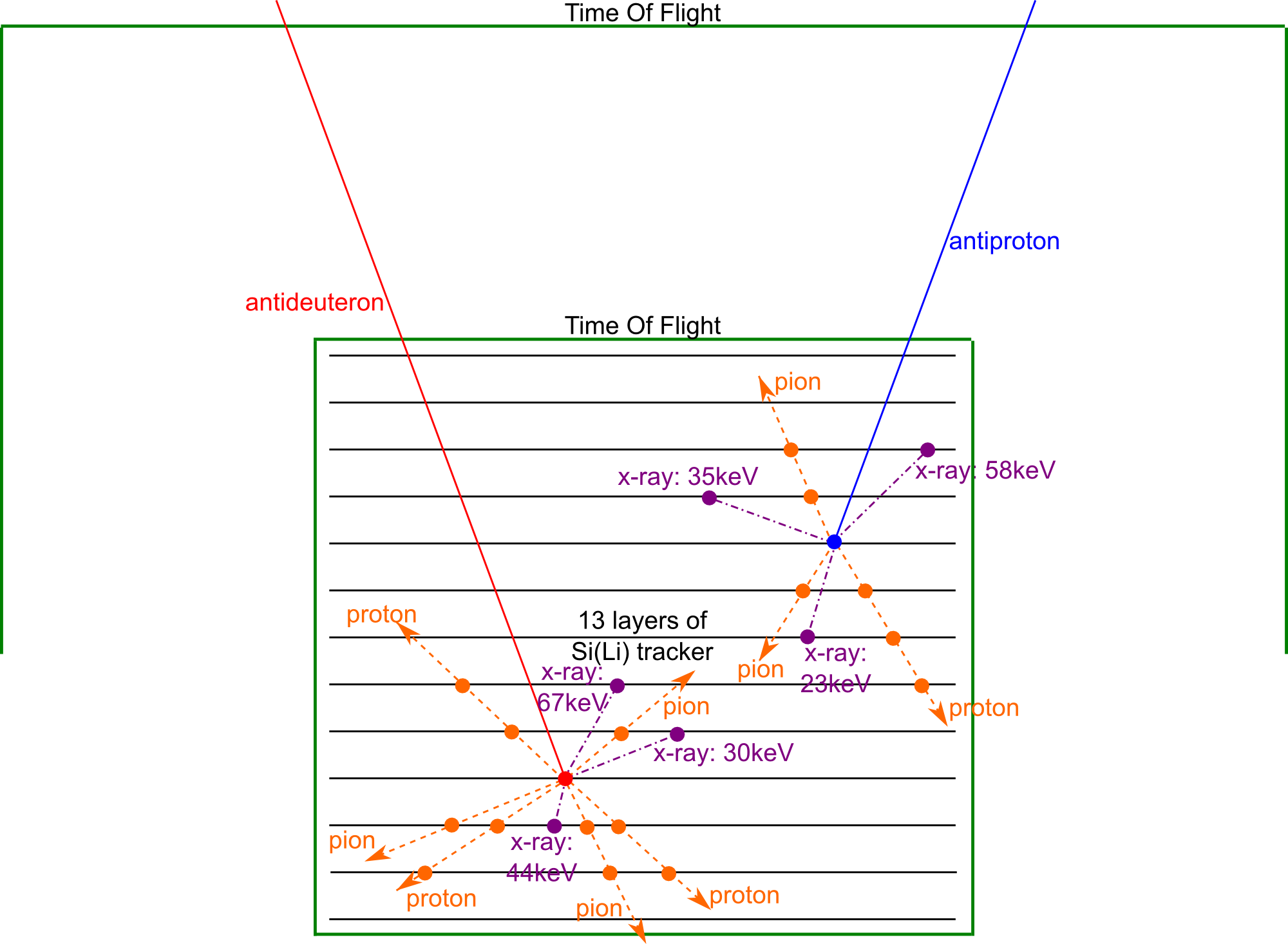
The GAPS experiment is foreseen to carry out a dark matter search using low energy cosmic ray antideuterons (< 0.3GeV/n) using a novel detection approach. The theoretically predicted antideuteron flux resulting from secondary interactions of primary cosmic rays, e.g. protons, with the interstellar medium is very low. So far not a single cosmic antideuteron has been detected by any experiment but well-motivated theories beyond the standard model of particle physics, e.g. Supersymmetry or universal extra dimensions, contain viable dark matter candidates which could led to a significant enhancement of the antideuteron flux due to self-annihilation of the dark matter particles. This flux contribution is believed to be especially large at small energies which leads to a high discovery potential for GAPS.
In comparison to other experiments, GAPS will be able to measure antideuterons at lower energies than the AMS-02 experiment and will partly cover complementary parameter space regions of dark matter scenarios studied by direct dark matter underground searches.

GAPS is designed to achieve its goals via a series of long duration balloon flights (bGAPS) at high altitude in Antarctica. The detector itself will consist of 10 planes of Si(Li) solid state detectors and a time-of-flight system. The antideuterons will be slowed down in the Si(Li) material, replace a shell electron and form an excited exotic atom. The atom will be deexcited by characteristic X-ray transitions and will end its life by the formation of an annihilation pion star. This unique event structure will deliver a nearly background free detection possibility.
A crucial task during the development of the GAPS instrument is to gain a good understanding of the large X-ray and particle backgrounds which could spoil the antideuteron identification. This background is mainly composed of three components: cosmic rays, products of cosmic-ray interactions with Earth’s atmosphere and products of interactions with the detector material itself. To study atmospheric interactions of cosmic rays with the atmosphere an adapted Geant4 based Planetocosmics simulation was developed. In addition, the Planetocosmics framework was also used to study the geomagnetic influence on the background rates. The results of these simulations were fed into a standalone Geant4 instrument simulation which is used to carry out a full GAPS detector simulation and reconstruction.
To prove the performance of the different detector components at stratospheric altitudes a prototype flight (pGAPS) was successfully conducted in June 2012.
Columbia University:
Tsuguo Aramaki, Florian Gahbauer, Charles Hailey (PI), Norm Madden, Kaya Mori, Kerstin Perez
Japan Aerospace Exploration Agency:
Nobutaka Bando, Hideyuki Fuke, Atsushi Takada, Tetsuya Yoshida
UC Berkeley:
Steven Boggs, Jane Hoberman, Steve McBride
University of Hawaii at Manoa:
Philip von Doetinchem
UC Los Angeles:
Isaac Mognet, Rene Ong, Jeffrey Zweerink